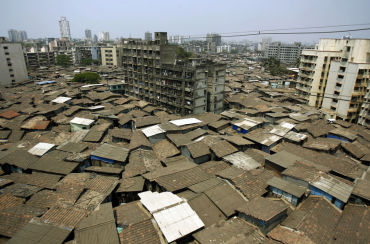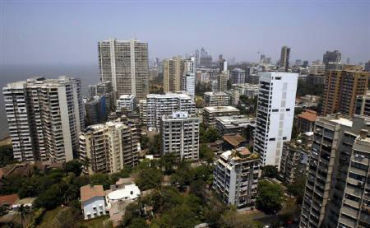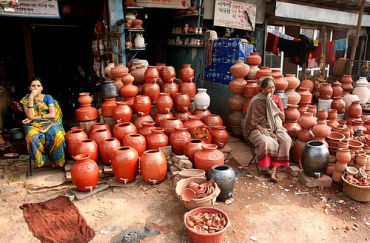 | « Back to article | Print this article |
'Builders and developers cannot dictate policies'
The Maharashtra government's decision to grant a floor space index of 3 for 16,302 old and dilapidated buildings in Mumbai and to redevelop sector five of the Dharavi slum is expected to give a much-needed boost to the realty sector.
At the same time, the government has sent a clear signal that builders and developers cannot dictate policies.
In an interview with Sanjay Jog, Maharashtra Minister of State for Housing, Sachin Ahir, explains the intent to bring in transparency in the realty sector and also make policies to increase housing stock to rationalise prices.
Click NEXT to read more...
'Builders and developers cannot dictate policies'
The government decision has paved way for the redevelopment of nearly 16,302 old and dilapidated buildings that came up before 1940.
The government has amended the development control rules, so tenants get a minimum 300 square feet and maximum 753.50 square feet carpet area tenement post development.
The FSI has been increased to three from two-and-a-half. The redeveloped buildings would be entitled to get a suitable corpus fund to take care of maintenance and repair for 10 years.
Click NEXT to read more...
'Builders and developers cannot dictate policies'
I must tell you according to this notification, redevelopment of these old and dilapidated buildings, which are private properties, would come under the purview of Right to Information Act.
Currently, properties of these buildings lie with the landlord. More than 70 per cent of the tenants of these buildings would have to give their consent for redevelopment and only after that, no-objection certificate would be granted by the Mumbai Repair and Reconstruction Board.
Click NEXT to read more...
'Builders and developers cannot dictate policies'
Will redevelopment of slums, currently situated in the CRZ area, be allowed?
The notification allows redevelopment of such slums in the CRZ. Such redevelopment would be possible with 51 per cent of funds from the state government.
What is the fate of 400 redevelopment projects that have been put on hold?
With the government's decision of providing minimum 300 sq ft of tenement, these projects are expected to kick start soon.
In these projects, nearly 200,000 to 300,000 sq ft of constructable area would be used.
Click NEXT to read more...
'Builders and developers cannot dictate policies'
The government has cancelled the earlier bidding process carried for redevelopment of the Dharavi slum situated in north-east Mumbai.
In a serious bid to bring in transparency and sanity in the entire redevelopment, the government has taken a decision to initially redevelop sector five of Dharavi, which is spread over 19 hectares and involves rehabilitation of over 9,000 families.
The redevelopment would be done by the Maharashtra Housing and Area Development Authority through appointment of contracts.
The rehabilitation of existing families would be done on the vacant land under MHADA's possession by using four FSI and subsequently, MHADA would construct houses for low, medium and higher income categories on the land vacated after rehabilitation of existing slum-dwellers.
Click NEXT to read more...
'Builders and developers cannot dictate policies'
Chief Minister Prithviraj Chavan is expected to announce a policy to redevelop Dharavi next week. MHADA is expected to launch redevelopment in next six months and complete it in four to five years.
Is Dharavi the only area under hutment redevelopment or the government has plans to carry out similar redevelopment of other slum pockets in Greater Mumbai?
There are larger sectors than Dharavi. Therefore, the government plans to redevelop slums situated on over 300 acres like Ramabai Ambedkar Nagar, Akruli Village, Malad-Malvani.
Is government allowing redevelopment of old buildings in Mumbai suburbs?
The government had taken the decision in the past but it was struck down by the High Court.
Click NEXT to read more...
'Builders and developers cannot dictate policies'
This would lead to increase in FSI to one-and-a-half from the present level of one.
This would pave way for redevelopment of old and dilapidated buildings in the suburbs.
Do you expect these slew of decisions will give a much-needed boost to the realty sector?
Certainly. The FSI of 3 for redevelopment of old and dilapidated buildings, redevelopment of sector five of Dharavi and restart of 400 redevelopment projects would lead to availability of more and more houses and this would definitely lead to a price correction in the Mumbai's realty sector within six months.
Click NEXT to read more...
'Builders and developers cannot dictate policies'
Citizens suspect government's policies are bent upon diktats from builders and developers.
This again depends on demand and supply. I sincerely feel there is scope for rationalisation of price once the housing stock is increased.
At the outset, I must clarify the government is not against builders and developers.
They have contributed much to the creation of the city, especially by constructing housing stocks.
There was a perception among people that there are some developers trying to dictate the policy to the government. However, it was never so.
I want to make it amply clear that builders and developers cannot dictate policies to the government but only hold discussions.








